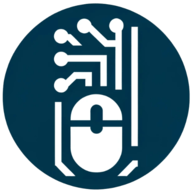7 Strategies for Working With Difficult Clients On Software Projects
Navigating the choppy waters of client relationships can make or break a software project. This article distills wisdom from seasoned experts into actionable strategies for effectively handling challenging clients. Discover the art of turning obstacles into opportunities by mastering communication, planning, and collaboration techniques.
- Set Up Real-Time Review Sessions
- Propose A Structured Plan
- Outline Clear Expectations Early
- Maintain Robust Communication Channels
- Implement A Structured Feedback Process
- Promote Collaboration And Partnership
- Stay Positive And Solution-Oriented
Set Up Real-Time Review Sessions
I once worked with a client who couldn't settle on a design choice. At first, it seemed like minor tweaks—changing a button color here, adjusting a font size there. But when they asked to change the primary brand color six times in two weeks, I realized we had a serious problem.
In order to not let things get worse, I set up a one-hour call after each major feature, sitting with a developer to adjust everything pixel-perfect in real time. This eliminated endless back-and-forth and forced the client to finalize decisions on the spot. Once a feature was reviewed, it was locked in unless a major issue came up. By offering two or three refined choices instead of open-ended options, I helped them commit without overthinking.
As written in "Getting Real," sometimes less choice is better and guiding the client is the best thing you can do.
He was in the end quite happy and the frustration kind of went away.
Propose A Structured Plan
In one software implementation project, a key client stakeholder had concerns about the timeline and repeatedly questioned our team's approach. They were very detail-oriented and often requested changes that conflicted with earlier agreements. This created delays and frustration on both sides. I started by scheduling a dedicated meeting to address their concerns and clarify goals. During this session, I made sure to actively listen, take notes, and restate their feedback to show I understood their priorities.
Once I understood their perspective, I proposed a structured plan. I shared a visual roadmap that highlighted milestones, timelines, and decision points. To address their requests, we agreed to implement critical changes immediately while documenting others for a later phase. This gave them confidence in our process while keeping the project on track. When the stakeholder raised further objections, I respectfully pushed back where necessary, explaining how certain changes could jeopardize the overall success. At the same time, I involved senior leadership when key decisions required alignment.
The project was delivered on time and exceeded performance expectations. The stakeholder later acknowledged that the structured approach helped them feel heard and valued while maintaining focus on the goals. From this experience, I learned the importance of balancing empathy with assertiveness. Clear communication, well-defined boundaries, and an open mindset are essential when working with demanding stakeholders.

Outline Clear Expectations Early
Ensuring that all expectations are clearly outlined from the beginning is crucial when dealing with challenging clients in software projects. This helps prevent misunderstandings and sets a solid foundation for the project. When everyone knows what is expected, the team can work more efficiently and effectively.
It also makes it easier to manage any changes that might arise. Clear expectations pave the way for a smoother workflow. Take the time to set expectations right from the start.
Maintain Robust Communication Channels
Creating and maintaining robust communication channels is key to handling clients who may be difficult. Regular updates and open lines of communication keep the client informed, reducing misunderstandings. This can help build trust and keep the project on track.
Miscommunication can lead to frustration and setbacks, so it's best to avoid it altogether. By establishing good communication, issues can be resolved before they escalate. Focus on clear and honest communication with every step.
Implement A Structured Feedback Process
A structured feedback process is essential when working with difficult clients in software projects. It ensures that feedback is collected systematically and addressed promptly. This approach not only keeps the project aligned with the client's vision but also helps in identifying and solving problems early.
A well-defined feedback process can lead to increased client satisfaction. By addressing feedback in an organized manner, smoother project delivery is possible. Commit to a structured approach to feedback.
Promote Collaboration And Partnership
Promoting an environment of collaboration and partnership can transform how difficult clients interact with the software team. When clients feel like partners rather than obstacles, they are more likely to be cooperative. This spirit of collaboration fosters mutual respect and facilitates smoother project progression.
Working together towards a common goal can overcome many hurdles. Encouraging partnership can lead to a successful project outcome. Foster a sense of collaboration from the outset.
Stay Positive And Solution-Oriented
Maintaining a positive and solution-oriented attitude is important when facing difficult clients in a software project. This mindset helps in turning challenges into opportunities for growth and improvement. Staying positive can lighten the mood and reduce tension, making it easier to find common ground.
Emphasizing solutions rather than problems keeps the project moving forward. A constructive attitude can influence the client to adopt a similar approach. Focus on being positive and solution-oriented throughout the project.


